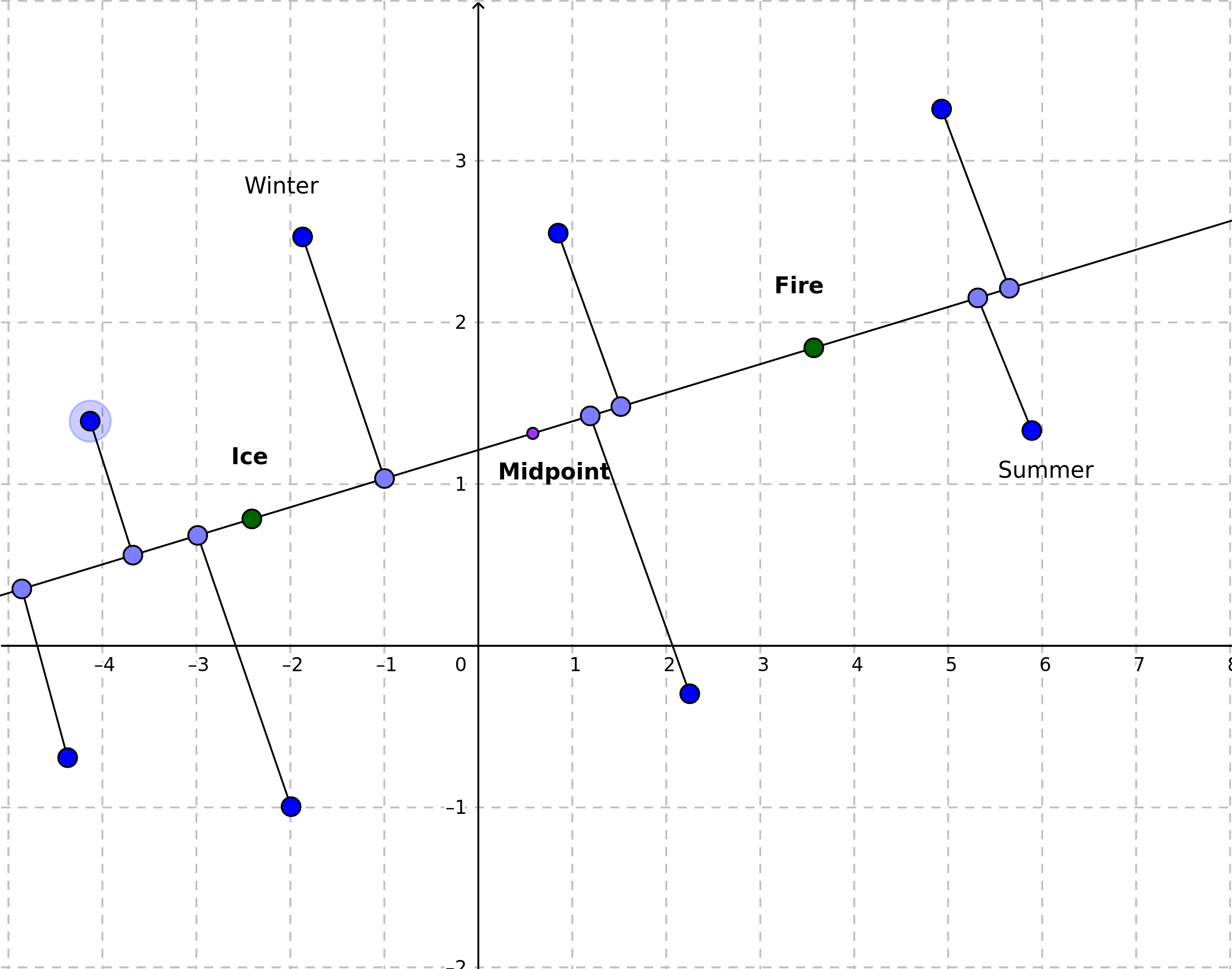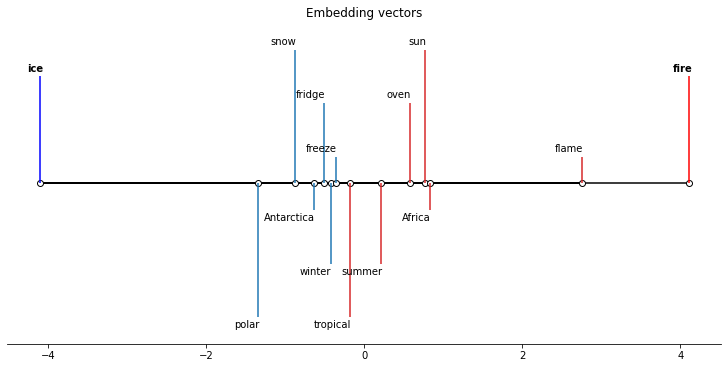Playing with embedding vectors
You can install this library from PyPI
pip install saltoor from the GitHub repo:
pip install git+https://github.com/krzjoa/salto.gitThe goal of the salto package is to explore embeddings and check, how the distance between two points (vectors) can be interpreted. We get two arbitrary selected points, such as embedding vectors for ice and fire draw a straight line passing trough the both these points. Then, we treat the newly created line as a new axis by projecting the rest of the points onto this line.
Drawn using: https://www.geogebra.org/m/JMMKv7cxI named the package salto, which means somersault in many languages or simply jump in Romance languages like Italian, where this word originally comes from. It's because the operation of changing space for me resembles a kind of acrobatics 😉.
import numpy as np
import spacy
import salto
nlp = spacy.load('en_core_web_md')
fire = nlp('fire')
ice = nlp('ice')
ice_fire_axis = salto.axis(ice.vector, fire.vector)
cold = ['ice cream', 'polar', 'snow', 'winter', 'fridge', 'Antarctica']
warm = ['boiling water', 'tropical', 'sun', 'summer', 'oven', 'Africa']
cold_vecs = [nlp(w).vector for w in cold]
warm_vecs = [nlp(w).vector for w in warm]
cold_values = [ice_fire_axis(p) for p in cold_vecs]
warm_values = [ice_fire_axis(p) for p in warm_vecs]
ice_fire_axis.plot(
{'values': cold_values, 'labels': cold, 'color': 'tab:blue'},
{'values': warm_values, 'labels': warm, 'color': 'tab:red'},
poles = {'negative': {'label': 'ice', 'color': 'blue'},
'positive': {'label': 'fire', 'color': 'red'}}
) scikit-spatial - Spatial objects and computations based on NumPy arrays.


